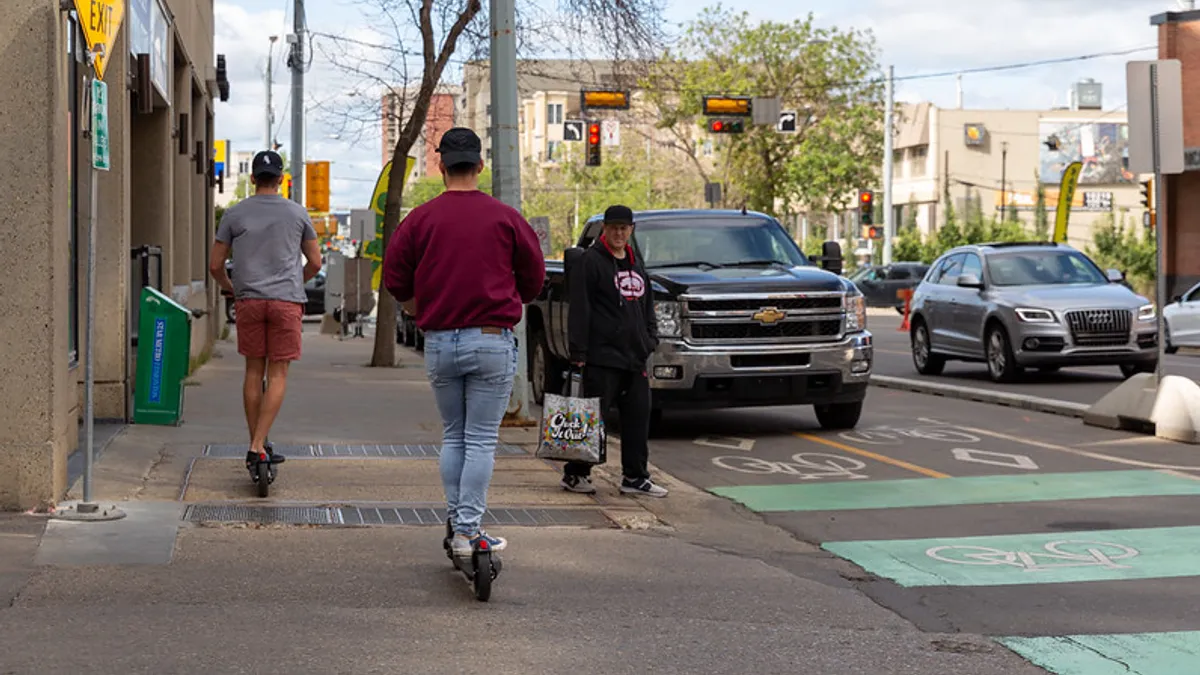Editor's Note: The following is a guest post from Shabazz Stuart, co-founder and CEO of Oonee, and Carl Vernersson, chief commercial officer at Voi Technologies.
Take a look at the streets. See anything new?
One-, two- and three-wheeled transport has taken off in cities around the world. Bicycling has been steadily growing in cities such as Paris, London, and Portland, OR, as light electric vehicles (LEVs) — electric unicycles, e-scooters, e-bikes, and e-trikes — have joined the mix.
There are so many new forms of "micromobility" out there, and according to investors and experts, this is only the beginning.
More than just a fun way to get around, micromobility has proven to be a critical lifeline during COVID-19 lockdowns. Bike shops have sold out of inventory as cycling and scooting popularity increases across the U.S., with new patterns suggesting the coronavirus experience may permanently change the way people move around. For many workers, lockdowns normalized working from home, shrinking the distance required for daily trips and making them more accessible on fewer wheels.
While micromobility has taken off, most cities have been slow to build the infrastructure necessary to support their use. This goes beyond comprehensive networks of connected and protected bike lanes — our cities also desperately need better parking solutions for personally owned and shared modes of transport.
Cars have dedicated parking spaces and lots, vast networks of roads engineered specifically for them, and even taxpayer-funded charging infrastructure. By contrast, micromobility vehicles must navigate the roadways of cars and the sidewalks of pedestrians.
For micromobility to rise to the next level in the U.S., we must make the same public space provisions to ensure that riding a bike, e-bike or e-scooter is at least as safe and convenient as driving a car.
The lack of secure parking is a significant barrier preventing people from purchasing or using their own micromobility vehicles, especially in dense cities where few residents have access to a garage or other safe storage. This infrastructure shortcoming has a disproportionate impact on lower-income communities: up to half of all bicycle commuters in the U.S. come from households making less than $25,000 a year — meaning a decent e-bike could exceed a month’s take-home pay. And with bike thefts up 68% in the U.S., it’s vital to help working cyclists and everyday micromobility users protect their investments.
Parking also matters when it comes to shared micromobility. Shared e-scooters have been wildly popular in recent years, but these services are operating on busy streetscapes that provide little room for them. There has been a salvo of articles criticizing micromobility for creating sidewalk clutter, which disproportionately affects more vulnerable road users, including people with disabilities.
But a variety of solutions to the dearth of appropriate parking infrastructure are within reach.
Recent success around reclaiming and repurposing parking spaces for restaurant cafés shows that city officials can, indeed, act fast and partner with the private sector to adapt streets to maximize social and economic benefits. Cities and companies should work together to create safe, secure parking for personally owned bikes and LEVs, as well as dedicated parking spaces to support the success of shared electric micromobility programs.
When it comes to shared micromobility, more and more cities are moving away from a fully dockless model and toward a "hybrid" operating model. Cities like Chicago and Washington, DC are now requiring locking devices on shared e-scooters and asking riders to secure scooters to a bike rack or pole at the end of a ride — a move that reduced public complaints by up to 60% in Chicago’s latest pilot.
Operators are also partnering with sophisticated geofencing companies that help to ensure vehicles are parked in designated zones, and also help to prevent sidewalk riding and keep pedestrians safe.
America's embrace of micromobility is good for cities — it increases access to affordable mobility while decreasing pollution and congestion. It’s up to cities, their citizens and the private sector to work together to create the space to welcome these modes by deploying parking solutions.
A smart parking solution combining public-private expertise and innovation will go a long way toward realizing the accessible, sustainable, more livable cities of the future.











